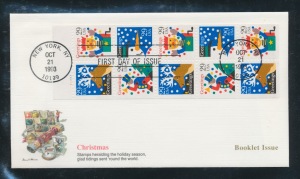By the way that some collectors squander their money, you would think that they had an overabundance of it. Throughout philatelic history, collectors have rarely been as careful as they should have been. In the late nineteenth century, few collectors scrutinized where they bought their stamps, and so reprinters and counterfeiters abounded during this period. One of the most egregious scams was the machinations of Nicholas Seebeck. In the early years of the twentieth century, Seebeck contracted with several South and Central American countries to print their stamps. In return, he kept the plates and flooded the market with stamps for collectors, which many of the collectors of this period bought willingly. But spurious and counterfeit issues weren’t the only problem. Throughout the history of our hobby, countless unnecessary stamps have been issued. Collectors are tolerant when a country like the United States issues 200 different stamps in a year. After all, we are a country of nearly 300 million people, and our Post Office handles billions of pieces of mail per year. So a robust stamp issuing policy for the United States is, while unnecessary, at least understandable. But look at Grenada (and many others). That island issues hundreds of stamps annually, most of which never see postal duty and most of which are carefully designed for the American and European market


Save Your Money
Uncategorized / May 9, 2013
Related Posts
Let It Snow
Uncategorized / February 11, 2009
Yesterday, we had nearly 30 inches of snow in my neighborhood of suburban Philadelphia. By three hours into the storm, the Internet, television and phone…
Public Auction 1069 april 28,29,30
Uncategorized / April 27, 2009
With over 3700 new lots I urge you to take a look at our Public Auction that takes place this week. Especially appealing is a…
An Offer
Uncategorized / April 28, 2009
Its amazing how rapid the response to blogs can be. I wrote several days ago about how inexpensively postage is selling for right now and…
Browse By
Country / Region

